OXFORD – Oxford High School sophomore Angelica Kopec placed her body at a 45-degree angle toward the 8.5 x 11 manilla colored paper hung on the wall 10 meters away. On the paper there were four rows of three black dots. These are the targets.
As a member of the Oxford Navy Junior Reserve Officer Training Corps (NJROTC) Marksmanship team at the high school, Kopec was competing in an air rifle shooting competition against a team from Texas. The two dots in the center of her paper target are enclosed in a rectangle for practice shots, but the ten targets surrounding the rectangle are for a score. She methodically positioned herself in the proper kneeling shooting position.
First, she placed her right knee on the ground, sitting back on her heel, positioning her foot directly under her spinal column with her toes pointed back. She kept her left leg as perpendicular to the ground as possible as she sat back. She then grasped the small stock of the air rifle with the firing hand, and cradled the fore-end of the rifle with the left arm. As she sized-up her target, she squeezed the trigger, which was immediately followed by a sharp snapping sound of compressed air pushing a lead pellet from the chamber and at one of the black dots.
She gets a lot of enjoyment out of the sport. “I like shooting,” Kopec said after she finished her competition. “It’s fun … I’ve learned patience, of which I still don’t have, but I’m learning. I’m trying.”
However, students cannot just show up to a marksmanship practice, pick up an air rifle and start shooting like Kopec. While she was in the middle of her shooting competition, her coach, Ed Kay, held his right index finger up vertically as if he was representing the number one. “This is your safety right here,” he said, flexing his finger as if pulling a trigger. Kay is Oxford High School’s head marksmanship coach and the school’s NJROTC science instructor. He was demonstrating the importance of safety when handling an air rifle to two new students. All students must pass this safety course with a perfect score to be allowed to use an air rifle and to be on the school’s marksmanship team.
Kay said the number one goal of gun safety is to make sure that there’s no accidents. “Nobody gets hurt,” he said to freshmen Nicole Brzozowska and Isabella Pabón as they attentively paid attention to Kay’s instruction. “Nothing gets shot that’s not supposed to be shot, and no one gets harmed.”
For every practice and competition, safety and gun control are the main priority and they work hand-in-hand with each other. Kay stressed to his students the importance of knowing “open action” and keeping fingers off the trigger. “I’m gonna say this right now, air rifles have mechanical safeties and I’ll show you where that’s at, but this is your safety right here,” as he flexed his index finger again. “This is not on the trigger. It cannot fire if it’s not on the trigger, okay? So, you will keep your finger off the trigger unless I tell you otherwise.”
He then had the students repeat three words, “muzzle,” which is the open circular discharging end of the rifle, “action,” the area on the rifle where the .177 caliber lead pellets are placed in the chamber, and “trigger,” the rifle’s firing mechanism. These three things are most important to know when it comes to operating an air rifle safely. “If your muzzle is downrange, your action is open and your finger is off the trigger. There’s no way it’s going to fire, nor will it be a danger.”
If the two freshmen pass, they have an opportunity to be on a good team. The Oxford NJROTC has a record of 2-0 in the Orion National Air Rifle League’s Sporter Distinguished Division. The team has recently beaten Harold L. Richards NJROTC from Oaklawn, IL and Earl Warren Air Force JROTC from Antonio, TX in two different virtual matches in the last two weeks. Kopec was competing against the Texas squad.
In each game the teams compete in what is known as a three-position air rifle match. The match is modeled after Olympic rifle competitions but adapted to high school age athletes. During a game between two teams in the Sporter discipline, each team member shoots ten shots in three different positions: standing, kneeling, and prone. Competitors are scored on ten targets per position in a 10-to-15-minute duration, depending on the position. Each shot is worth a maximum of 10.9 points. The sum of points scored in 30 shots is the athlete’s total. The total team score is composed from the top four best scores from each team. The official shooting results are scanned into the league’s national database.
Sophomore Reese Reynolds was the leading scorer for Oxford in both team victories. She shot a score of 246.5 against HLR, but improved her score to 255.2 the following week against EW. The other scoring members on the team are Kopec, Julian Pabón, and Emma Robertson.
Reynolds, who is also a standout soccer player for the girls’ varsity team, is Oxford’s best shooter. “If you look at her prone position scores, she was really high,” Kay said. “I mean, you can see all the dots around (the bullseye). That’s an absolute perfect shot and she’s got four of them on here out of ten. She’s quite an athlete.”
Both Reynolds and Kopec are the top two marksmen on the team. “They are very good,” Kay said. The goal for both girls is to qualify for the Massachusetts Junior Olympics by their junior year. “They’re both going to have to build up some stamina because that’s 60 shots standing. It’s tough, but the potential is there. They’re both excellent athletes and they’re coachable.”
Sponsored by the Orion Scoring System, the league is a national team league for high school teams and junior rifle clubs. The league has two parts, an eight-week regular season followed by a single elimination conference title game for the top two teams in each conference.
Oxford High School’s senior science naval instructor, David Youngsman, said there are added benefits to acquiring marksmanship skills besides competitions, such as self-discipline, responsibility, and patience. “When you have a kid that can’t focus in a classroom and you put him on the range, he’ll focus for ten minutes just against a piece of target paper from ten meters away,” he said. “And then you pull him aside after that session and you say, ‘okay, look, you just focused for ten minutes on that piece of paper, but when I get you in the class, you can’t sit still. I just watched you do it for ten minutes. Now, I’m gonna hold you to it.’ Sometimes, not always, but sometimes you see the lightbulb come on. They’ll say, ‘Oh my gosh, you know you’re right. I can!’ … Then knowing the same thing applies to the classroom, gives them the understanding that they can do something and that they can focus. They can be deliberate in their decision making.”
Next up for Coach Kay and his air rifle crew will be a match against Waller Air Force JROTC from Waller, TX. Waller currently has a 2-1 record in the league. Kopec, who serves as the marksmanship team’s commander, said she hopes to work on her aim and to be less shaky during her next match. As she finished her last round of shooting from the kneeling position, her legs felt a little numb.
“She was hurting,” Kay said. “You know that’s a mental thing. She has to overcome the discomfort in some of these positions. That makes this a tough sport. Can you mentally get past the discomfort? Their legs go numb in the kneeling position sometimes, but can you mentally get past that to focus on a small black dot ten meters away? This sport teaches a certain amount of resiliency, ’cause if they can get past an uncomfortable situation, then they can do anything.”


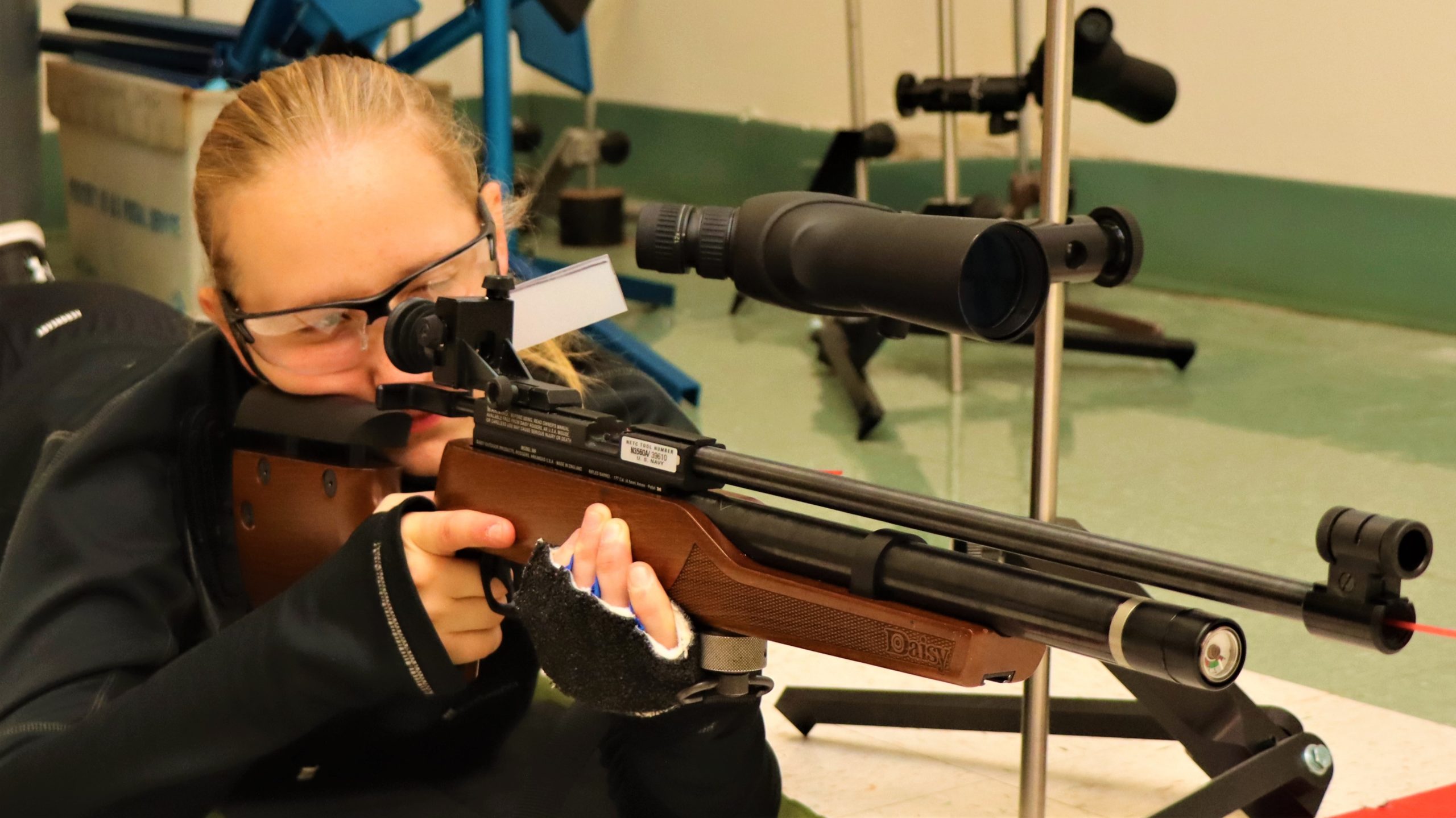
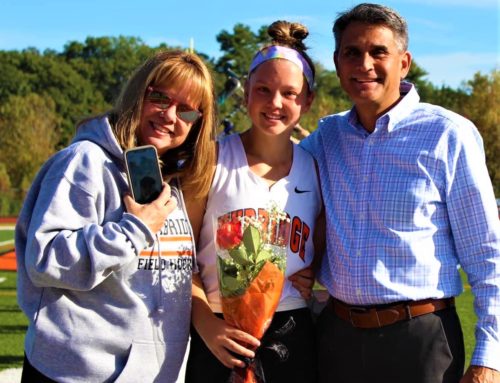
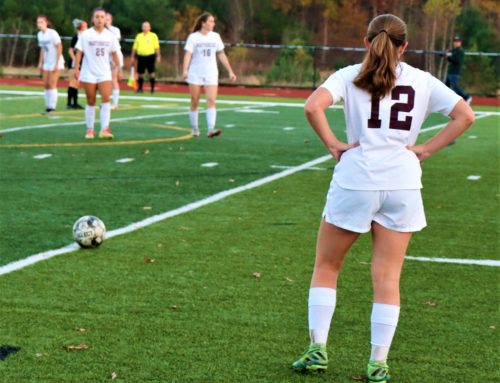
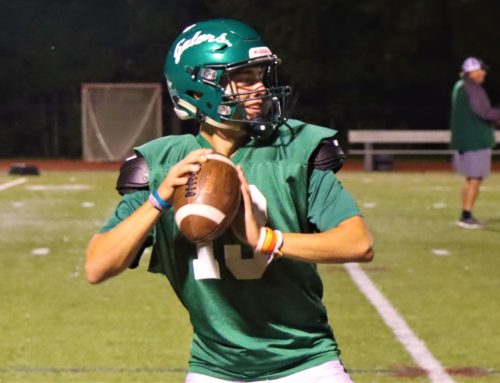
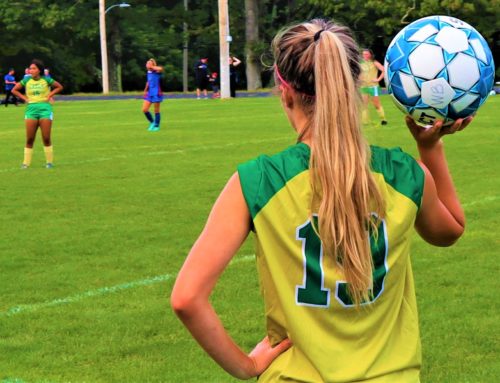
Leave A Comment